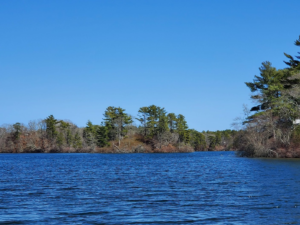Drinking Water
 The Plymouth-Carver Sole-Source Aquifer was formed over thousands of years as rainwater and snowmelt seeped into the ground and slowly filtered through layers of sand, and gravel, eventually accumulating in an underground aquifer. The aquifer is located in southeastern Massachusetts, and it provides drinking water to over 200,000 people in the towns of Plymouth and Carver.
The Plymouth-Carver Sole-Source Aquifer was formed over thousands of years as rainwater and snowmelt seeped into the ground and slowly filtered through layers of sand, and gravel, eventually accumulating in an underground aquifer. The aquifer is located in southeastern Massachusetts, and it provides drinking water to over 200,000 people in the towns of Plymouth and Carver.
The formation of the Plymouth-Carver Sole Source Aquifer began during the last Ice Age, when glaciers covered much of North America. As the glaciers receded, they left behind sediment and rocks that created the geological features that make up the aquifer. Over time, rainwater and snowmelt began to seep into the ground and slowly percolate through the layers of sediment, forming the aquifer.
The aquifer is considered a “sole-source” because it is the only source of drinking water for the communities of It is the only source of drinking water Plymouth, Carver and Bourne, and parts of Wareham, Middleborough, Plympton and Kingston. Many people have private homeowner wells drilled directly into the aquifer, like “straws into an underground lake.” It is important that the aquifer be protected from contamination to ensure a safe and reliable supply of drinking water for future generations, because it is the only source of drinking water we have in our area.
Other communities in Massachusetts rely on complex drinking water treatment and distribution systems to get their clean water. Such treatment systems involved retention basins, flocculation chambers, pH adjustment, and carbon filters to produce clean water for distribution to consumers. However, for thousands of years, southeastern Massachusetts has relied upon the natural systems of forests and sand to filter and protect our drinking water source. Now these natural resources are under threat, from sand mining, over-development, and solar arrays, and we must act quickly to protect the ecosystems services that they provide, because our clean drinking water depends on it.
